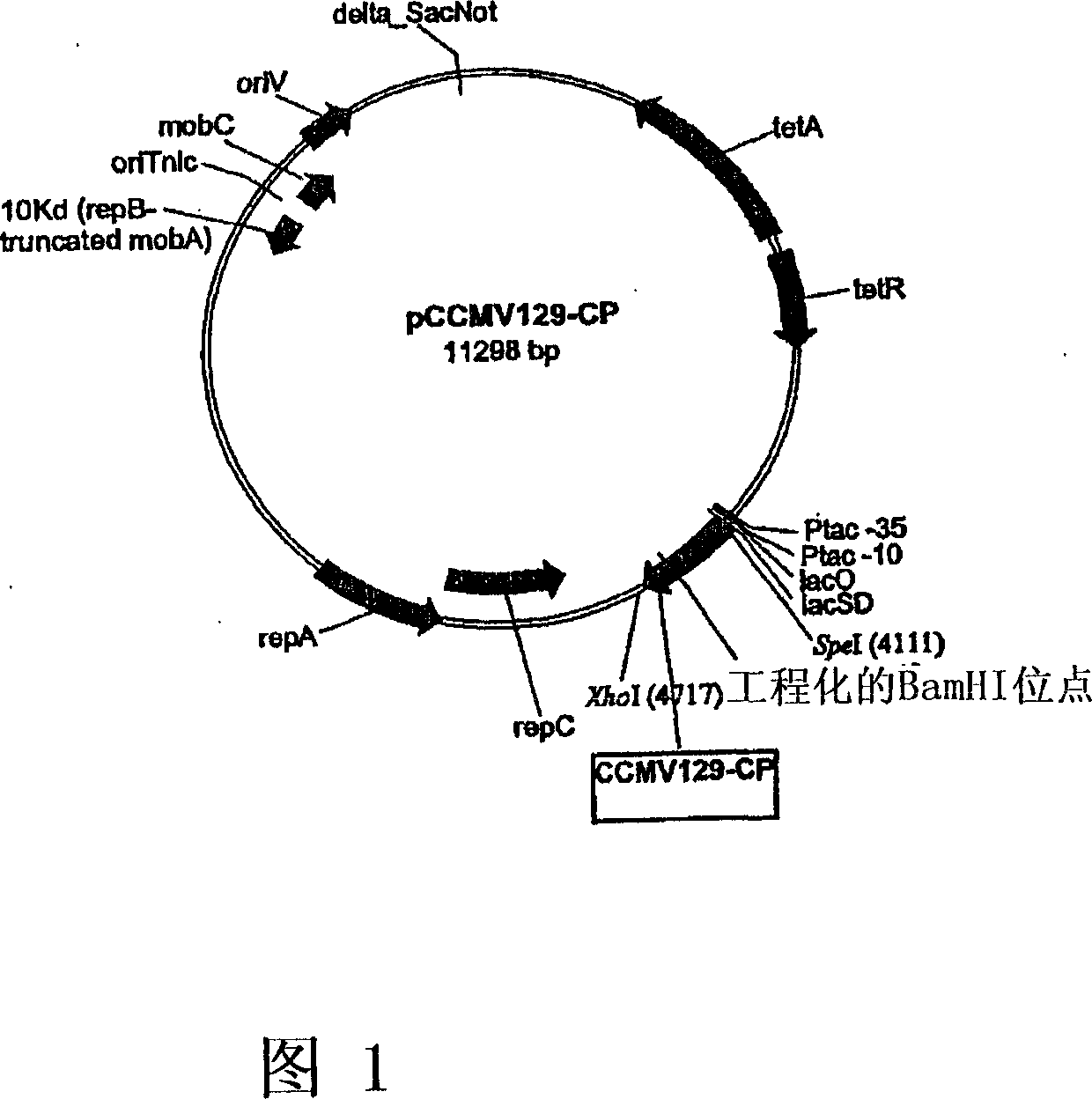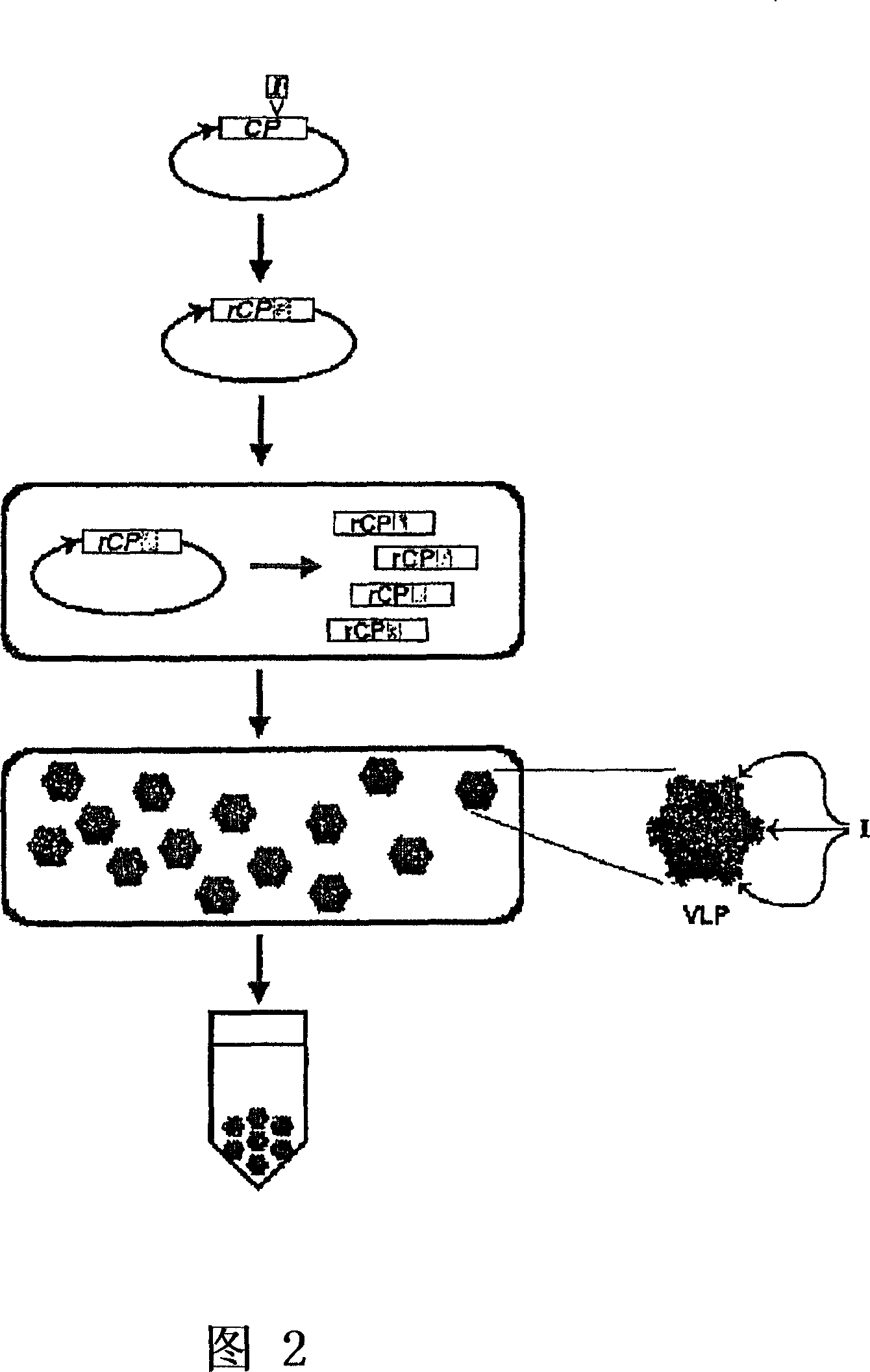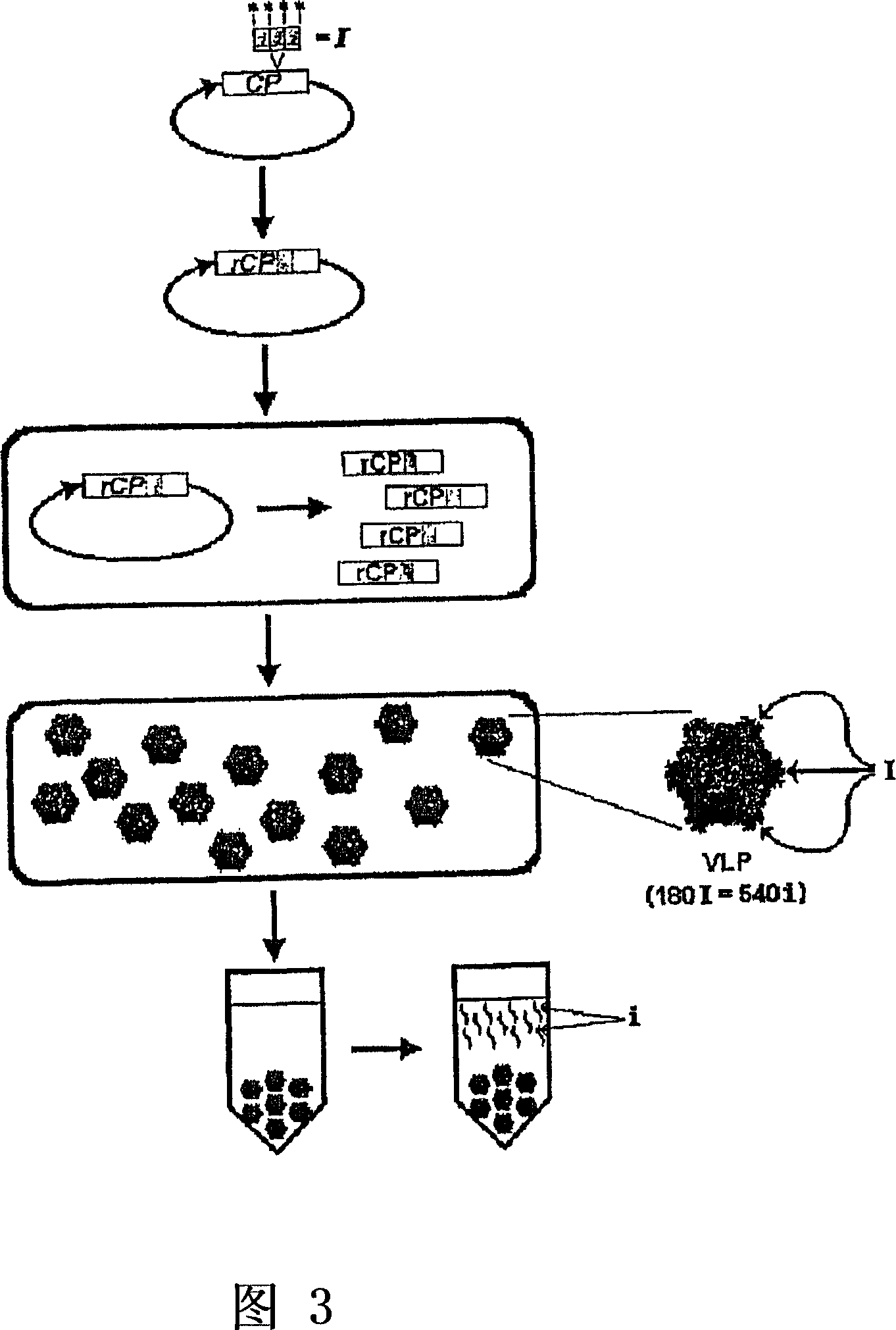Recombinant icosahedral virus like particle production in pseudomonads
A technology of icosahedron and pseudomonas, which is applied to viruses, antiviral agents, single-celled algae, etc., can solve problems such as the destruction of protein geometric structure and the failure of chimeric virus assembly
- Summary
- Abstract
- Description
- Claims
- Application Information
AI Technical Summary
Problems solved by technology
Method used
Image
Examples
Embodiment 1
[0346] Example 1: Production of Peptide PD1 in CCMV VLPs in Pseudomonas
[0347] 1.A. Construction of chimeric CCMV-PD1 gene
[0348] 20 amino acid antigenic peptides were selected as inserts in CCMV capsid virus to express. Antigenic peptides were not related to CCMV and Pseudomonas fluorescens. Oligonucleotides encoding peptides were amplified from plasmid pCP7Pavol DNA using primers Parvo-BamHI-F (nucleotide sequence: 5'-cgggatcctg gacccggatg-3' (SEQ ID NO: 16)) and Parvo-BamHI-R (nucleotide sequence : 5'-cgggatcccc gggtctcttt c-3' (SEQ ID NO: 17)). (These primers were obtained from Integrated DNA Technologies, Inc., Coralville, IA, USA, hereinafter referred to as "IdtDNA"). These primers amplified from the canine parvovirus peptide coding sequence with the addition of BamHI restriction sites at both ends for insertion into the CCMV 129 coding sequence at their BamHI restriction sites.
[0349] Use PTC225 thermal cycler (MJ Research, South San Francisco, CA, USA) to c...
Embodiment 2
[0374] Example 2: Production of D2A21 AMP trimers in CCMV VLPs in Pseudomonas and collection of AMP therefrom
[0375] 2.A. Synthesis of D2A21 insert
[0376] The nucleic acid sequence encoding the antimicrobial peptide ("AMP") trimer ("D2A21 trimer", i.e. three D2A21 monochimeric AMPs) was amplified from plasmid pET-(D2A21)3 using primer D2A21-BamHI- F (nucleic acid sequence: 5'-cgggatcctg ggacagcaaa tgggtcgcga tccg-3' (SEQ ID NO: 5)) and D2A21-BamHI-R (nucleic acid sequence: 5'-cgggatcccg tcgacggagc tcgaattcgg atcacc-3' (SEQ ID NO: 6)) . PCR reactions were performed according to the same protocol as described in Example 1.A. above.
[0377] The resulting amplified inserts contained added BamHI restriction sites at each end for insertion of the D2A21 trimer CDS into the CCMV129 CDS at the engineered BamHI sites. The nucleic acid coding sequence and amino acid sequence of the D2A21 trimer are shown in SEQ ID NO: 19 and 20, respectively.
[0378] Nucleotide sequence enc...
Embodiment 3
[0409] Example 3: Production of anthrax antigen in CCMV VLPs in Pseudomonas
[0410] 3.A. Synthesis of PA peptide insert
[0411] Four different B. anthracis protective antigen ("PA") peptides (PA1-PA4) were independently expressed in CCMV VLPs. Nucleic acids encoding PA1-PA4 were synthesized by SOE (Splice Overlap Extension) of synthetic oligonucleotides. The resulting nucleic acid contains the BamHI recognition site ends. The nucleic acid coding sequence and amino acid sequence of these PA peptides are respectively as follows: 1) for PA1, SEQ ID NO: 8 and 9; 2) for PA2, SEQ ID NO: 10 and 11; 3) for PA3, SEQ ID NO: 12 and 13; and 4) for PA4, SEQ ID NO: 14 and 15. The resulting nucleic acid was digested with BamHI to create cohesive ends for cloning into the shuttle vector. Each resulting PA insert was cloned into the pSEC-CCMV129BamHI shuttle plasmid at the BamHI site of the CCMV129 CDS. Each of the resulting shuttle plasmids was digested with SpeI and XhoI restriction...
PUM
| Property | Measurement | Unit |
|---|---|---|
| diameter | aaaaa | aaaaa |
Abstract
Description
Claims
Application Information
 Login to View More
Login to View More - R&D
- Intellectual Property
- Life Sciences
- Materials
- Tech Scout
- Unparalleled Data Quality
- Higher Quality Content
- 60% Fewer Hallucinations
Browse by: Latest US Patents, China's latest patents, Technical Efficacy Thesaurus, Application Domain, Technology Topic, Popular Technical Reports.
© 2025 PatSnap. All rights reserved.Legal|Privacy policy|Modern Slavery Act Transparency Statement|Sitemap|About US| Contact US: help@patsnap.com



